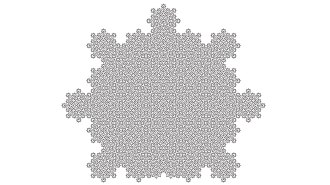- More than 2 years ago
The roster of prime numbers—those numbers divisible only by 1 and themselves—has a new top dog. On Feb. 18, the computer-based Great Internet Mersenne Prime Search (GIMPS) turned up the largest known prime number, whose formula is 2 to the 25,964,951st power minus 1. The new prime is a whopping 7,816,230 digits long, making it more than half-a-million digits longer than the previous record-holder. The number would completely fill 58 issues of Science News.
The new champion is a so-called Mersenne prime, named after the 17th-century monk Marin Mersenne who formulated a famous but incorrect conjecture about these numbers. Mersenne numbers have the form 2p – 1, where p is a prime. Written in base 2, such a number consists simply of the digit 1 repeated p times. For example, the Mersenne numbers in base 2 for p = 2 and p = 3 are 11 and 111, respectively.
Large prime numbers play an important role in cryptographic systems, such as those used for Internet transactions involving credit cards. In this context, however, “large” means on the order of 100 digits. A 7-million-digit prime is a curiosity, with no immediate use.
GIMPS is a distributed computing project that harnesses the power of tens of thousands of computers owned by volunteers all over the world. Each computer runs a prime-searching program at times when it would otherwise be idle. Martin Nowak, a German eye surgeon and mathematics enthusiast who is one of the project’s volunteers, discovered the latest prime using one of his office computers. Anyone can join the project by downloading software available at http://www.mersenne.org.






